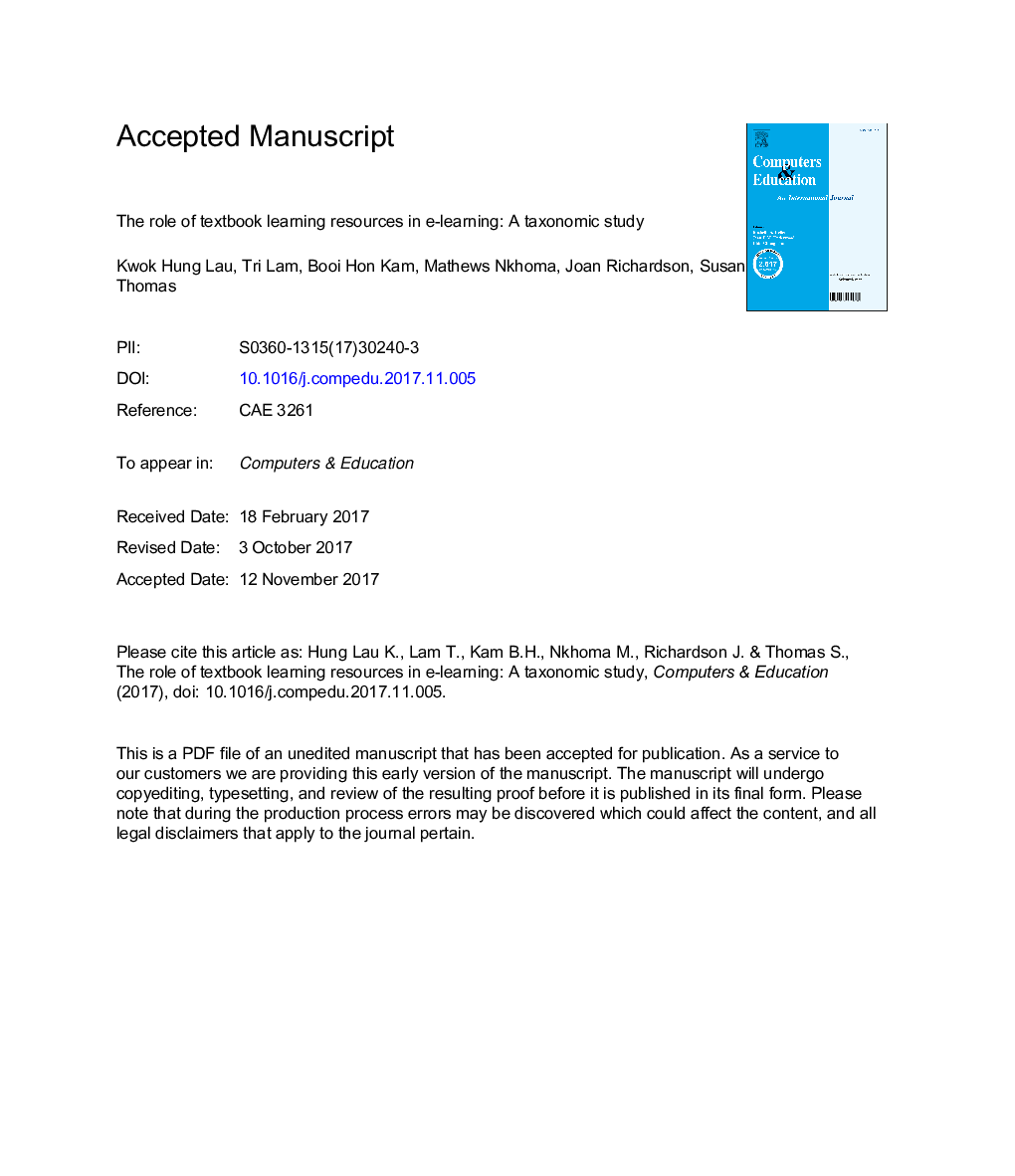| Article ID | Journal | Published Year | Pages | File Type |
|---|---|---|---|---|
| 6834798 | Computers & Education | 2018 | 37 Pages |
Abstract
While textbooks are crucial to learning in the traditional classroom-based setting, their role in e-learning environment might be different. Through a categorical analysis, this study investigates if the currently available learning resources provided by textbooks are suitable for e-learning purpose. An e-learning framework incorporating different stages of learning and usage of learning resources was first developed as a guide. Then, a sample of learning resources that came with 100 commonly used textbooks in the disciplines of logistics/supply chain management and information systems were classified using the framework. To corroborate the classification, cluster analysis was also conducted to identify major clusters of learning resources along two dimensions - complexity of content and ease of use. The findings show that most of the sampled textbook learning resources are only suitable for low-order to mid-order learning according to the revised Bloom's taxonomy. The majority of the resources investigated lack the sophistication and complexity to support high-order learning that involves a great deal of interaction and collaboration among learners and facilitators on e-learning platforms. In other words, existing textbook learning resources might contribute well to self-regulated low-order and mid-order e-learning involving basic to intermediate cognitive processes, such as remembering, understanding, applying and analysing. They are generally ill-designed to facilitate high-order e-learning involving advanced cognitive processes, such as evaluating and creating, which require extensive interaction and collaboration among learners and facilitators in an e-learning environment.
Related Topics
Social Sciences and Humanities
Social Sciences
Education
Authors
Kwok Hung Lau, Tri Lam, Booi Hon Kam, Mathews Nkhoma, Joan Richardson, Susan Thomas,
